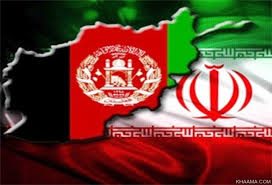RFL/RE – Iranian lawmakers have proposed new legislation that would impose severe prison terms on undocumented migrants and allow security officers to shoot at vehicles suspected of carrying them.
The move would affect members of Iran’s estimated 3.5 million-strong Afghan community, many of whom have no legal status or basic rights.
Observers say Iranian authorities are keen to prevent a new influx of Afghan migrants and refugees as violence is intensifying in neighboring Afghanistan, where the devastating 19-year war has displaced several million people.
Under the bill — submitted by Iranian lawmakers on November 26 — undocumented migrants entering or residing in Iran would face prison terms of up to 25 years.

The proposed legislation also allows police to use firearms to halt a vehicle if it escapes a security checkpoint and “there is a strong suspicion it is carrying illegal migrants.”
And the families of illegal migrants killed or wounded in Iran would not be able to apply for compensation if the bill was made law.
Iranian border guards are known to beat, shoot at, and kill Afghan migrants who illegally enter the country.
In June, Iranian police opened fire on a car carrying Afghan migrants in Yazd Province, causing it to explode in flames. Three Afghans were killed and five wounded in the incident.
Iranian authorities said police fired on the vehicle because they suspected it was carrying drugs and undocumented migrants.SEE ALSO:’Afghan Lives Matter’: Gruesome Deaths Of Migrants In Iran Spark Outrage
A month earlier, a group of some 50 Afghans illegally crossed into Iran and were detained by Iranian border guards who allegedly beat and tortured them and then forced them to jump into the Harirud, a 1,100-kilometer-long river shared by Afghanistan, Iran, and Turkmenistan. Many of them drowned.SEE ALSO:’They Were Laughing’: Iranian Border Guards Accused Of Torturing, Drowning Afghan Migrants
The two events sent Afghans protesting in the streets and onto social media to denounce Iranian authorities for what they allege is abuse and discrimination against Afghan migrants and refugees in Iran.
For decades, Afghans weary of war and poverty have gone to Iran to earn a living. Tehran has expelled many Afghans — who are often blamed for insecurity and unemployment — and periodically threatens those who remain with mass expulsion.Noor Rahman Akhlaqi, Afghanistan’s refugee and repatriation minister, said some parts of the legislation were “shocking.”
Many other Afghans moved to Iran following the decade-long Soviet occupation of Afghanistan and the civil war that followed the Soviet withdrawal in 1989.
Others sought refuge in Iran after the fundamentalist Taliban took power in Afghanistan. After the U.S.-led invasion that followed the 9/11 terrorist attacks in 2001, some Afghans went to Iran seeking jobs.
Under the proposed bill, illegal migrants would also face hefty fines of up to 100 million tomans, or around $2,400. Judicial authorities could also confiscate any property or assets they have in Iran.
Meanwhile, Iranian citizens who accommodate, transport, or employ undocumented migrants would also be punished under the proposed legislation.
Iranian state media reported that the bill would be voted on “very soon.”
Noor Rahman Akhlaqi, Afghanistan’s refugee and repatriation minister, said some parts of the legislation were “shocking.”
In a tweet on November 26, he said that “we expect the human rights of all Afghans to be respected in all countries.”
History Of Discrimination
International human rights groups have documented years of violations against Afghan refugees and migrants in Iran, including physical abuse, detention in unsanitary and inhumane conditions, forced payment for transportation and accommodation in camps, slave labor, and the separation of families.
In 2015, Iranian Supreme Leader Ayatollah Ali Khamenei issued a decree granting all Afghan children the right to go to school. But Afghans are still denied many other basic services, including access to health care, jobs, and housing.
The United Nations High Commissioner for Refugees (UNHCR) estimates there to be some 3.5 million documented and undocumented Afghan refugees and migrants living in Iran.
Thus far in 2020, more than 767,000 Afghans living in Iran have returned home, according to the International Organization for Migration (IOM).
The IOM says “2020 is now on track to become the largest ever return year on record for undocumented Afghan migrants” from Iran.
Some of those Afghans have been deported by Iranian authorities. Others have returned voluntarily due to the coronavirus pandemic, which has hit Iran particularly hard, and the worsening economic situation there. Many Afghans take on menial work that many Iranians are not interested in.
- Frud BezhanFrud Bezhan covers Afghanistan and Pakistan, with a focus on politics, the Taliban insurgency, and human rights. He has reported from Afghanistan, Kosovo, and Turkey. Prior to joining RFE/RL in 2011, he worked as a freelance journalist in Afghanistan and contributed to several Australian newspapers, including The Age and The Sydney Morning Herald.
 Shabtabnews In this dark night, I have lost my way – Arise from a corner, oh you the star of guidance.
Shabtabnews In this dark night, I have lost my way – Arise from a corner, oh you the star of guidance.



